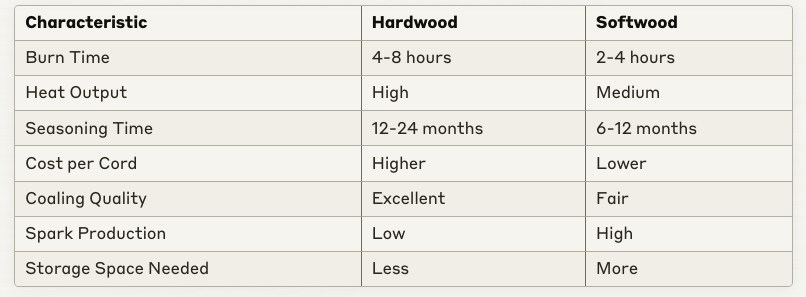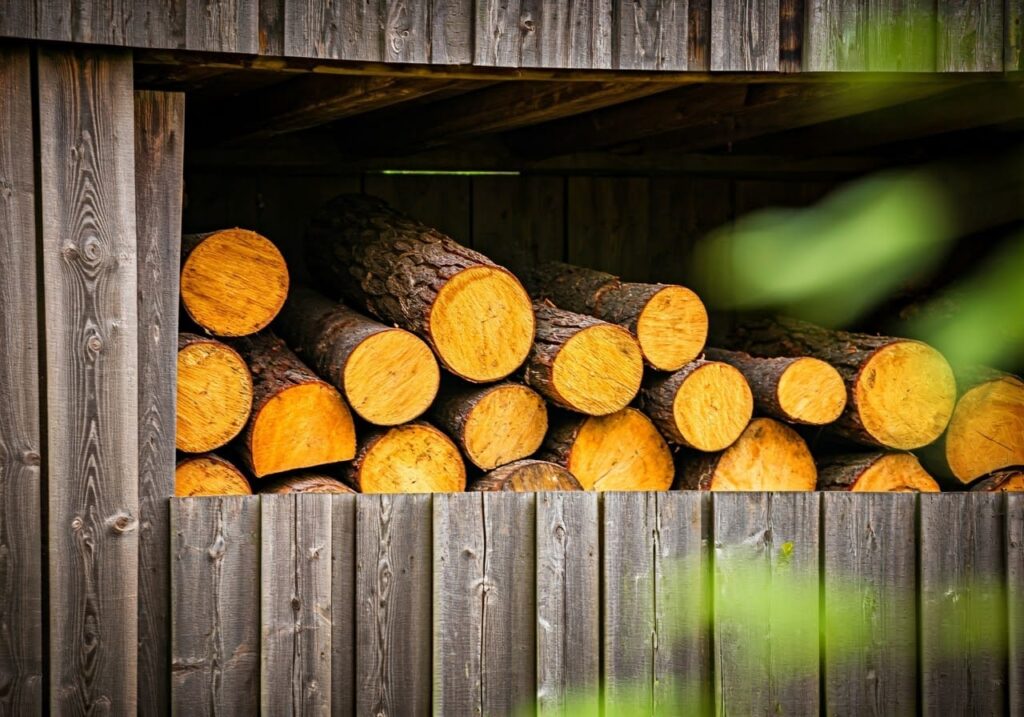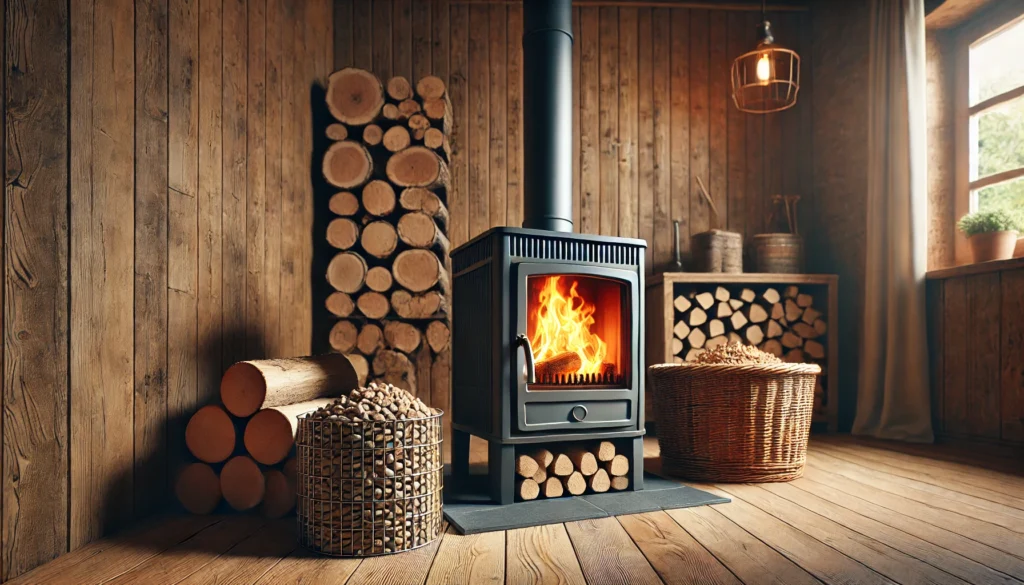When it comes to heating your home with a wood stove, one of the most common questions is whether to burn hardwood or softwood. This choice can significantly impact your heating efficiency, cost, and overall satisfaction with your wood stove experience. Let’s explore the characteristics of both types and help you make the best decision for your needs.

Understanding the Difference
Contrary to what their names might suggest, the terms “hardwood” and “softwood” don’t actually refer to the wood’s physical hardness. Instead, these classifications come from the trees’ biological structure and reproductive methods. Hardwoods come from deciduous trees that lose their leaves annually, while softwoods come from coniferous trees that typically keep their needles year-round.

The Case for Hardwood
Hardwood has long been considered the gold standard for wood stove fuel, and for good reason. Dense woods like oak, maple, and hickory create long-lasting fires with impressive heat output. When you load your stove with quality hardwood, you can expect a steady burn that can last several hours longer than softwood.
The dense nature of hardwood means it contains more potential energy per volume. This higher density translates to fires that burn hotter and longer, often producing a more consistent heat output. For overnight burns or all-day heating, hardwood is typically the superior choice.
Key Benefits of Hardwood
- Higher BTU output per cord
- Longer burn times
- Better for overnight heating
- Less frequent reloading required
The Case for Softwood
While hardwood often gets all the glory, softwood shouldn’t be dismissed as an inferior fuel source. Pine, spruce, and other softwoods have their place in an efficient wood-burning strategy. Their lower density and higher resin content mean they ignite quickly and produce intense initial heat, making them excellent choices for starting fires or quick warm-ups during milder weather.
Softwoods also tend to season (dry) more quickly than hardwoods, typically requiring only 6-8 months compared to the 12-18 months often needed for hardwood. This shorter seasoning time can be a significant advantage if you’re just starting to build your wood supply.
Cost Considerations
The price difference between hardwood and softwood can be substantial, with hardwood typically commanding a premium price. However, it’s important to consider the value rather than just the cost. A cord of hardwood, while more expensive, will generally provide more total heat and burn time than a cord of softwood.
Making the Right Choice for Your Needs
The best choice often depends on your specific situation. Consider these factors:
Climate and Heating Needs
In regions with severe winters, hardwood’s longer burn times and higher heat output make it the obvious choice for primary heating. However, in milder climates or during shoulder seasons (spring and fall), softwood’s quick-burning characteristics might better suit your needs.
Storage Space
If storage space is limited, hardwood’s higher energy density means you can store more potential heat in a smaller area. However, if you have ample storage space, mixing both types might be optimal.
The Ideal Strategy: Using Both
Many experienced wood stove users find that the best approach is maintaining a supply of hardwood and softwood. Use softwood for:
- Starting fires
- Quick heat during cool mornings
- Shoulder season heating
Reserve hardwood for:
- Overnight burns
- Primary heat during cold weather
- Maintaining long-lasting fires
Best Practices for Either Choice
Regardless of whether you choose hardwood or softwood, proper preparation is crucial. The wood should be:
Well-seasoned with moisture content below 20%
Stored properly to maintain dryness
Split to appropriate sizes for your stove
Protected from rain and snow while allowing airflow
Environmental Impact
When sourced responsibly, both hardwood and softwood can be environmentally sustainable choices. The key is choosing wood from well-managed forests and local sources to minimize transportation impacts.
Conclusion: Hardwood vs. Softwood Your Choice
While hardwood generally performs better in wood stoves, softwood has its place and can be an effective fuel source when used appropriately. The best strategy might be to keep both types on hand, using each for its strengths. Remember that properly seasoned wood of either type will always outperform unseasoned wood, regardless of species.
Consider your specific needs, local availability, and storage capabilities when making your choice. Whether you opt for hardwood, softwood, or a combination of both, proper seasoning and storage are crucial for optimal burning performance.


